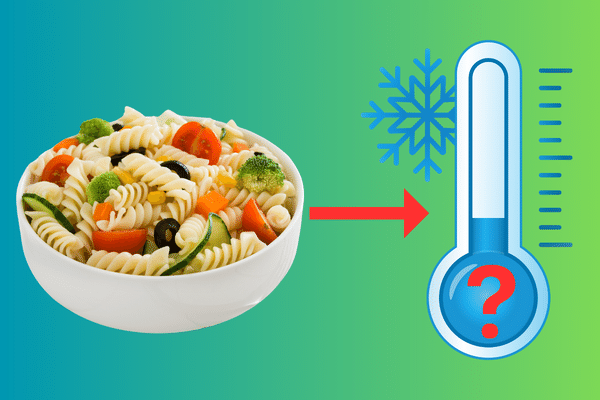Pasta salad is a popular dish that combines cooked pasta with various vegetables, proteins, and a dressing. Since it contains perishable ingredients, it’s essential to follow proper food safety guidelines to prevent foodborne illnesses.
In this article, we’ll explore the maximum cold holding temperature allowed for pasta salad and provide additional information to help you store and handle it correctly.
Maximum Cold Holding Temperature Allowed for Pasta Salad
The maximum cold holding temperature allowed for pasta salad is 40°F (4.4°C) or below, according to the United States Food and Drug Administration (FDA) Food Code.
This temperature range is considered the safe zone for storing and holding cold foods, including pasta salad. Maintaining pasta salad at or below this temperature helps prevent the growth of harmful bacteria that can cause foodborne illnesses.
How Long Does Pasta Salad Last in the Fridge?
Properly stored in the refrigerator, pasta salad can last for 3 to 5 days. It’s important to note that this storage time is based on several factors, such as the freshness of the ingredients, the type of dressing used, and the storage temperature.
If the pasta salad contains highly perishable ingredients like seafood or eggs, it may have a shorter shelf life.
How Do You Keep Pasta Salad Fresh Longer in the Refrigerator?
To help keep your pasta salad fresh for as long as possible, follow these tips:

- Store in an airtight container: Transfer the pasta salad to an airtight container or cover the bowl tightly with plastic wrap or aluminum foil to prevent air exposure and moisture loss.
- Refrigerate promptly: Don’t let the pasta salad sit out at room temperature for more than two hours. Refrigerate it as soon as possible after preparation or serving.
- Avoid cross-contamination: Keep the pasta salad separate from raw meats, poultry, or seafood to prevent cross-contamination.
- Consider portion control: If you won’t be consuming the entire batch within a few days, consider dividing the pasta salad into smaller portions and storing them separately. This way, you can use the portions as needed and minimize the risk of spoilage.
How Can You Tell if Pasta Salad is Bad?
Even when stored properly, pasta salad can eventually spoil. Here are some signs that your pasta salad has gone bad:

- Unpleasant odor: If the pasta salad has an off-putting, sour, or rancid smell, it’s best to discard it.
- Discoloration: Look for any signs of discoloration, such as brown or gray spots on the pasta, vegetables, or dressing.
- Texture changes: If the pasta salad has become slimy, mushy, or has an overall unappetizing texture, it’s likely spoiled.
- Mold growth: The presence of any mold growth on the pasta salad is an immediate indication that it should be discarded.
According to FDA Consuming spoiled pasta salad can lead to foodborne illnesses, which can have serious health consequences.

